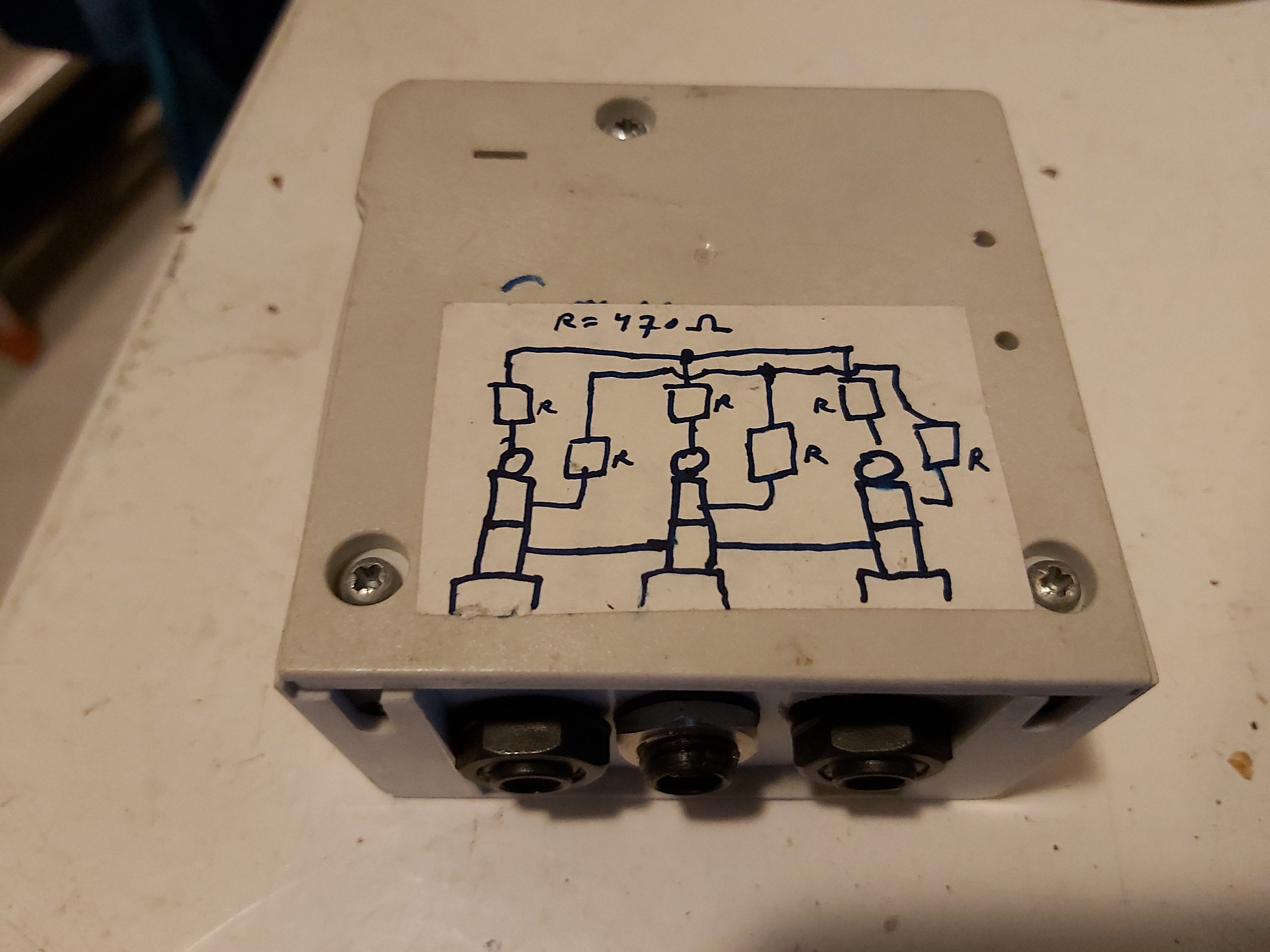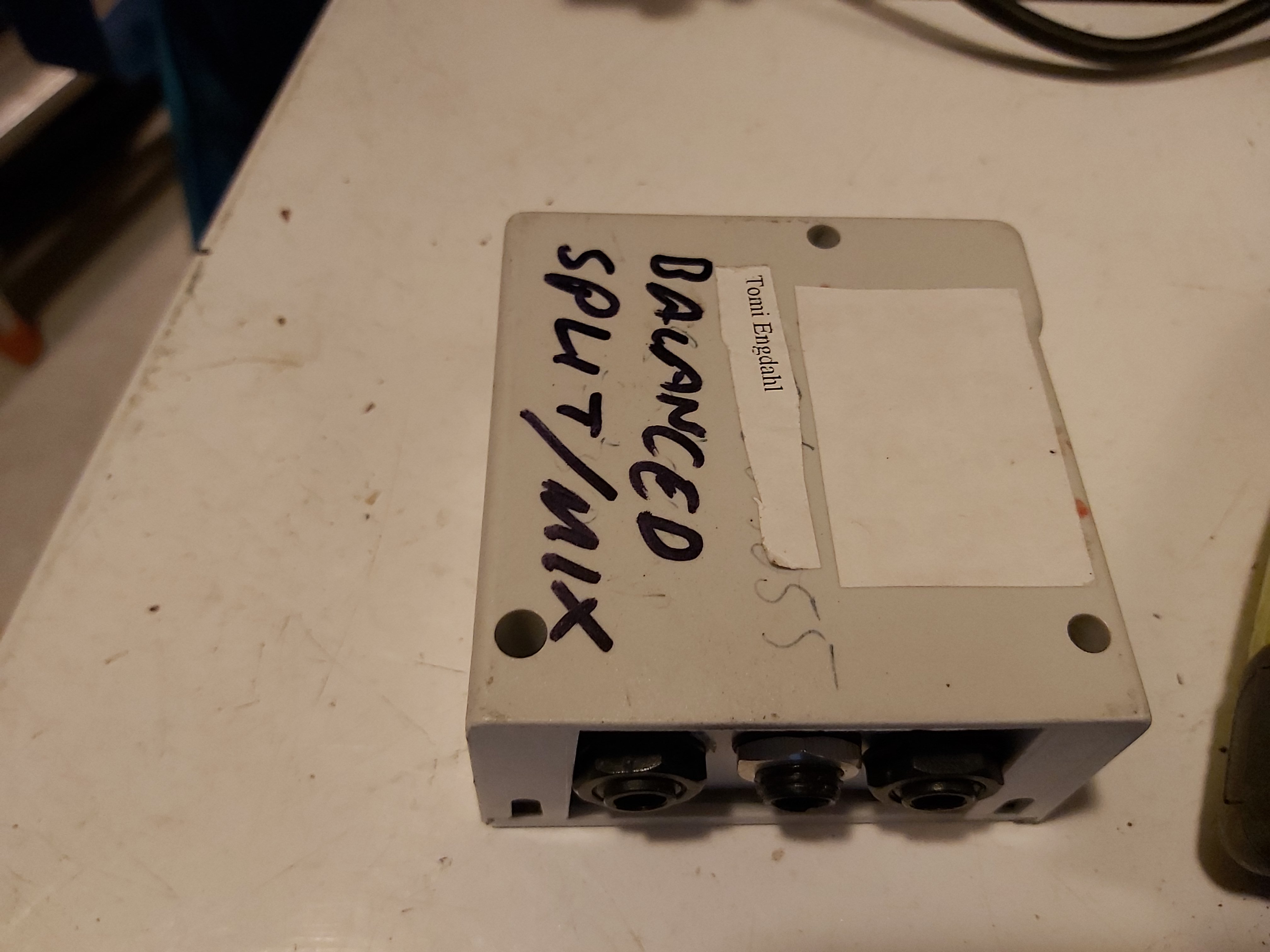For a passive summing mixer is a circuit to combine two audio signals to one signal.
Passive summing works generally ok, both with unbalanced and balanced circuits if all connected circuits are same type (mixed balaced and unbalanced is mixed business if it works as wanted or not). When the devices connected to all inputs are powered on, things work typically very well. In some cases if you turn off some devices connected to one input, it can start to introduce distortion to sound.
I have used my DIY passive mixer circuits several times with event PA system and TV broadcasting setup.
For my passive summing boxes I have used resistance values from few hundred ohms (professional equipment balanced/unbalanced interfaces, potentially long lines and audio transformers on system) to 10 kohm (consumer equipment short distance to amplifier) depending on case.
Typical audio outputs have output impedance in around 20 ohms to 2 kilo-ohms range.
Balanced passive thing would be used to combine a couple of identical sources. Microphone or mixer.
Here is one of my DIY passive mixer circuit I have used for balanced signals from professional equipment (600 ohm or lower impedance).


4 Comments
Mike James says:
What a great article! Thanks for sharing a wonderful information. This is exciting and fun to read, I have gain more knowledge because of this. Good work!
weaver game says:
I have been using the phone for a while and I can say that it makes the job very easy.
among us says:
I strongly recommend buying a separate phone, especially if you have your own business.
Tomi Engdahl says:
How to Build a DIY Passive Summing Box
https://www.diyrecordingequipment.com/blogs/news/15851740-how-to-build-a-diy-passive-summing-box
I’ve been curious for a while about the fuss surrounding analog summing. But with commercial boxes priced $600+ I wasn’t that curious. Luckily, passive summing is a pretty simple concept and one that’s very wallet- and DIY-friendly to achieve. Check out the video above for a quick run-through of how I built my 16-channel summing box.
How It Works
Most analog summing designs take a number of mono inputs and assign them to the stereo bus via either pan pots or L-C-R switches. This route, while superior in functionality, is rather complex and expensive. The design below leaves out panning/assigning and makeup gain in order to avoid the need for power and forgo toggle switches (≈$7.50/channel). What we end up with is a passive bus mixer: 4 or 8 stereo pairs are summed via L and R buses, which are then sent to external microphone preamps for makeup gain.
https://www.diyrecordingequipment.com/products/sb2-16×2-passive-summing-mixer